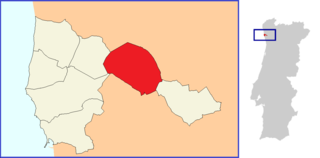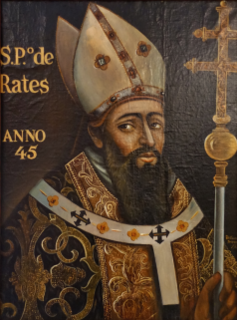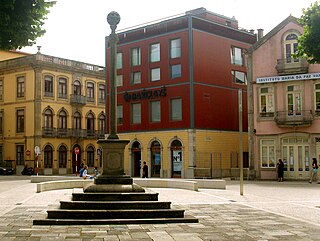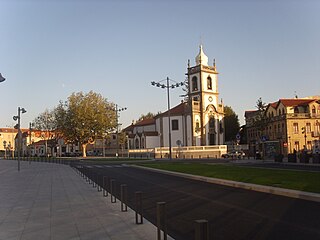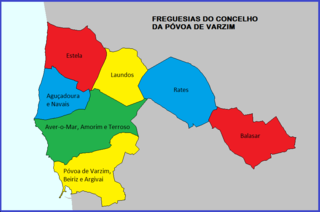
Rates Ecomuseum (Portuguese: Ecomuseu de Rates or Ecomuseu de São Pedro de Rates) is a historic countryside pedestrian circuit or ecomuseum in the parish of Rates in Póvoa de Varzim, Portugal.
An ecomuseum is a museum focused on the identity of a place, largely based on local participation and aiming to enhance the welfare and development of local communities. Ecomuseums originated in France, the concept being developed by Georges Henri Rivière and Hugues de Varine, who coined the term ‘ecomusée’ in 1971. The term "éco" is a shortened form for "écologie", but it refers especially to a new idea of holistic interpretation of cultural heritage, in opposition to the focus on specific items and objects, performed by traditional museums.
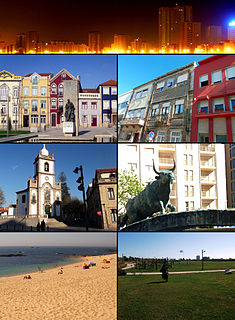
Póvoa de Varzim, also spelled Povoa de Varzim, is a Portuguese city in Northern Portugal and sub-region of Greater Porto. It sits in a sandy coastal plain, a cuspate foreland, halfway between the Minho and Douro rivers. In 2001, there were 63,470 inhabitants, with 42,396 living in the city proper. The city expanded, southwards, to Vila do Conde, and there are about 100,000 inhabitants in the urban area alone. It is the seventh-largest urban agglomeration in Portugal and the third largest in Northern Portugal.

Portugal, officially the Portuguese Republic, is a country located mostly on the Iberian Peninsula in southwestern Europe. It is the westernmost sovereign state of mainland Europe, being bordered to the west and south by the Atlantic Ocean and to the north and east by Spain. Its territory also includes the Atlantic archipelagos of the Azores and Madeira, both autonomous regions with their own regional governments.
Contents
Highlights of the 8 km-long circuit are the Romanesque Church of Rates, the bell-tower of the former monastery, the Praça, the rural architecture using shale as a construction material, the local section of the way of Saint James, the countryside landscape, windmills, watermills and the linen, bread and wine-making cultures.

The Monastery of Rates was a Benedictine monastery located in the parish of Rates in the municipality of Póvoa de Varzim, in Portugal. The part of the monastery that has survived to this day is the bell-tower and, most importantly, the Church dedicated to St Peter of Rates, mostly known as Romanesque Church of Rates, which is a national monument since 1910. Reconstruction of the church began at the turn of the 11th to the 12th century, turning it into one of the oldest extant Romanesque churches in Portugal.

Linen is a textile made from the fibers of the flax plant. Linen is laborious to manufacture, but the fiber is very strong, absorbent and dries faster than cotton. Garments made of linen are valued for their exceptional coolness and freshness in hot and humid weather.

Bread is a staple food prepared from a dough of flour and water, usually by baking. Throughout recorded history it has been a prominent food in large parts of the world and is one of the oldest man-made foods, having been of significant importance since the dawn of agriculture.
The ecomuseum includes maps and plates with information in Portuguese and English.




